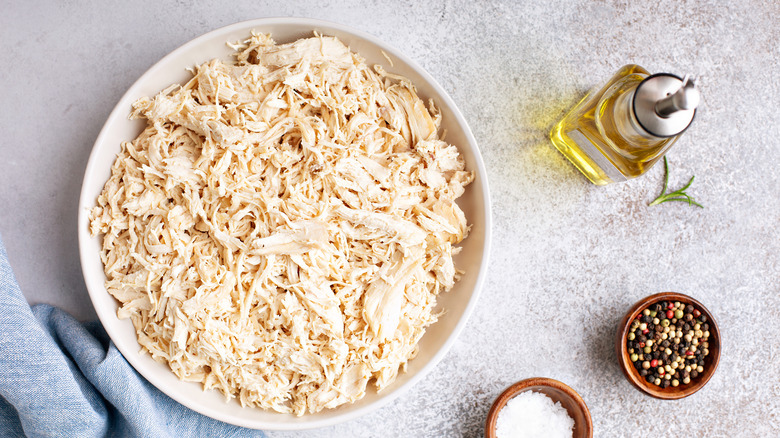Rubber and chicken, while they may share similar colors, should never commingle in your culinary creations. But alas, the dreaded rubbery chicken skin is a common pitfall that can plague even seasoned home cooks. Fear not, poultry enthusiasts, for this in-depth guide will empower you with the secrets to fixing rubbery chicken skin and ensuring that every bite is a tender, juicy delight.

Image: fashioncoached.com
Section 1: Understanding the Cause of Rubbery Chicken Skin
The culprit behind rubbery chicken skin lies in the protein called collagen. When chicken is cooked, collagen begins to break down, contributing to its juicy texture. However, if the chicken is overcooked, the collagen breaks down too much, leaving behind a tough, chewy skin.
Section 2: The Four Pillars of Tender Chicken
To avoid this culinary mishap, master the four pillars of tender chicken:
-
Marination: Adding moisture and flavor to chicken before cooking helps break down the collagen and tenderize the meat. Use a flavorful marinade of your choice, such as a mixture of olive oil, herbs, spices, and citrus juice.
-
Brining: Submersing chicken in a salt solution (brine) before cooking draws out excess moisture and replaces it with salt, leading to a more seasoned and juicy bird. The ideal brine concentration is 1/4 cup of kosher salt dissolved in 1 quart of water.
-
Sous Vide Cooking: This precision cooking method uses a controlled water bath to cook chicken to an exact internal temperature, ensuring even cooking and preventing overcooking.
-
Proper Cooking Temperatures: To determine doneness, use a meat thermometer inserted into the thickest part of the chicken. For white meat, remove the chicken from the heat at an internal temperature of 165 degrees Fahrenheit; for dark meat, cook to 180 degrees Fahrenheit.
Section 3: Rescuing Overcooked Chicken Skin
Even if your chicken skin has already fallen victim to rubberiness, there are ways to salvage the situation:
-
Braising: Simmering the chicken in liquid, such as broth or wine, helps rehydrate the skin and break down the collagen, restoring tenderness.
-
Grilling with Indirect Heat: Grill the chicken over indirect heat, away from the flames, to prevent further overcooking and allow the skin to soften.

Image: www.tastingtable.com
Section 4: Tips for Crispy Skin
While our focus is on preventing rubbery skin, let’s not forget the allure of crispy chicken skin. Here are some tips:
-
Dry the chicken: Pat the chicken dry before cooking to remove excess moisture, which can hinder crisping.
-
Use high heat: High heat sears the skin, creating a crispy exterior while keeping the inside juicy.
-
Flip frequently: Flip the chicken regularly during cooking to ensure even crisping on all sides.
-
Arm yourself with cornstarch: Sprinkling cornstarch on the skin before cooking adds an extra layer of crispiness.
How To Fix Rubbery Chicken Skin
Section 5: Beyond the Basting Brush
Marinades and brines are essential, but there are other ways to add flavor to your chicken:
-
Compound Butter: Spread a flavorful compound butter, made from herbs, spices, and citrus zest, under the skin before cooking.
-
Citrus Injection: Use a needle to inject citrus juice or other flavorful liquids into the chicken, creating juicy, flavorful meat from the inside out.
-
Seasoning Pastes: Create a paste of herbs, spices, and oil, then massage it into the chicken to infuse it with flavor.